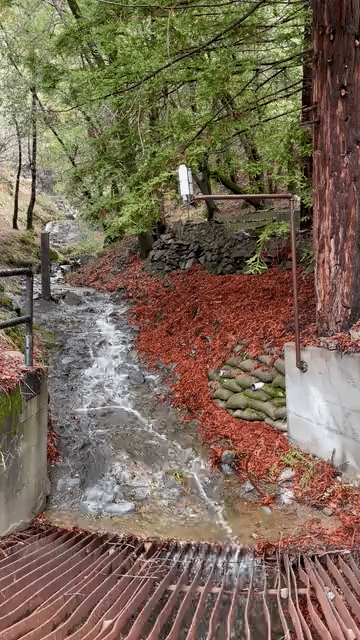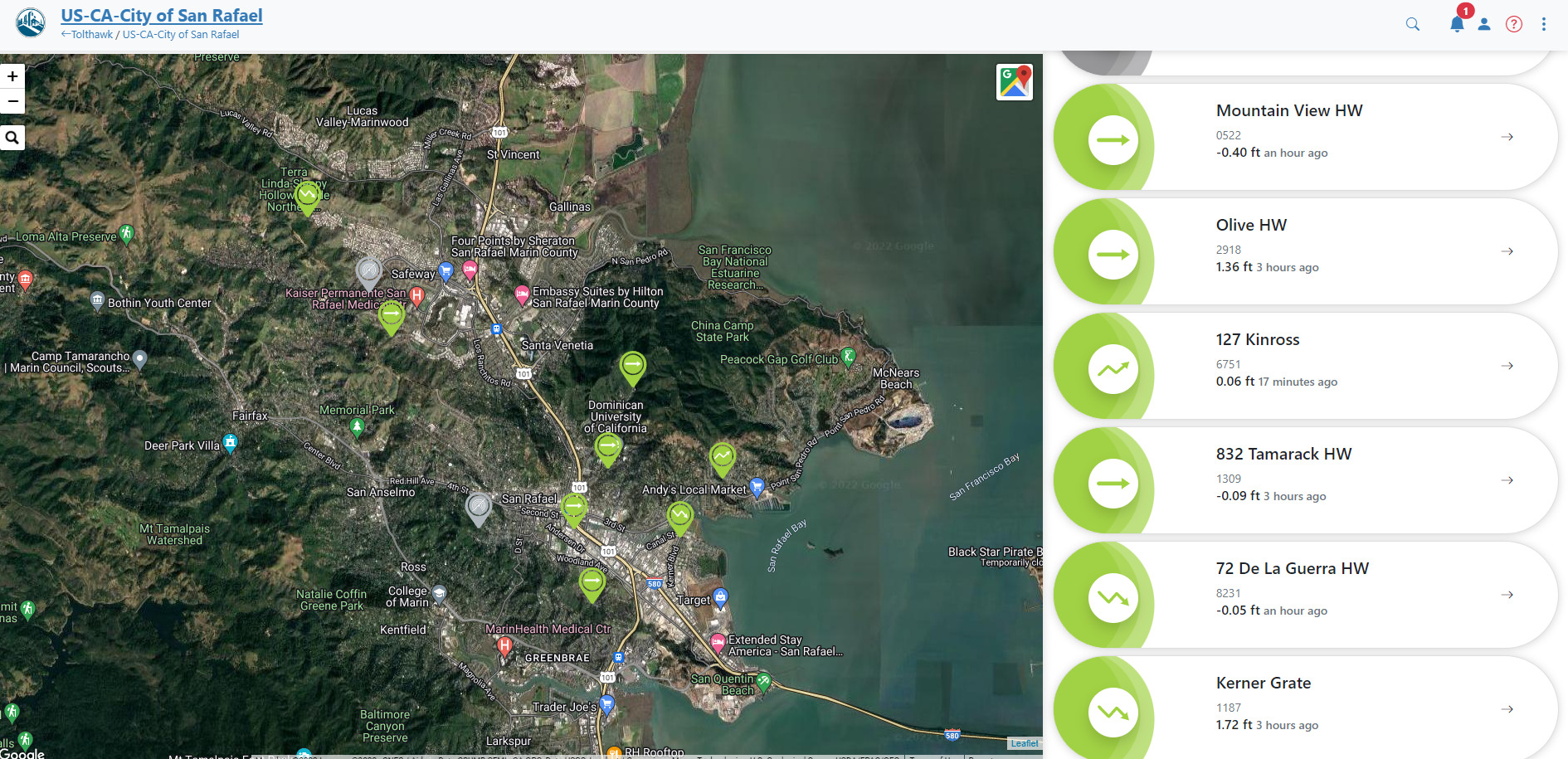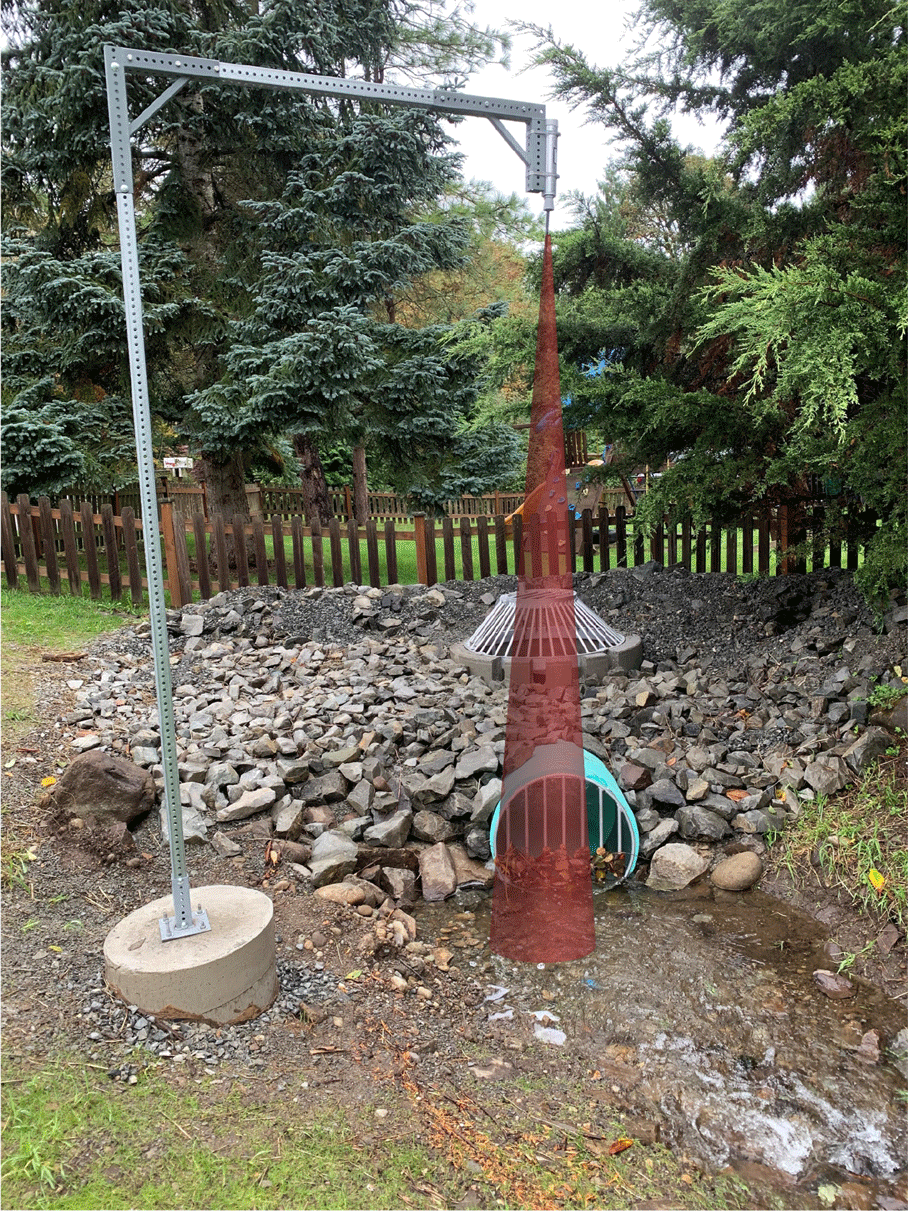Case Study: Stormwater at City of San Rafael
Introduction
Introduction
The City of San Rafael is located in the north Bay Area, north of the Golden Bridge and San Francisco. The city is surrounded by steep, bare hills. In the wet winter months, rains poses flood and flash flood risks to many of its neighborhoods if the stormwater drainage headwalls, become clogged with debris. A clogged headwall can result in flooding within a few minutes or hours. It is therefore critical for the city’s public works department to attend to the situation in a timely manner to avoid flooding the neighborhood and houses. The city also has stormwater pumps with screens to keep debris out of the pumps. Debris can clog these screens and dam the water feeding into the pumps. The spillover from this debris can cause significant fooding in the surrounding neighborhood.Solution
Solution
In 2020, the City of Rafael installed ToltHawk Stormwater Monitoring sensors in each of their 12 critical headwalls and stormwater pump-stations. A week after their installation, the ToltHawk Stormwater Monitoring system compensated for itself as the city saw its first rain storm of the season. Before ToltHawk, the city had to rely on proactive citizens to report of any flood situations or the city’s own crew to patrol the neighborhoods for flooding.After installing ToltHawk sensors, the city’s approach to flooding was a complete paradigm shift. The city is now able to monitor all the critical flooding points in realtime from a single page via phone or web browser. Furthermore, each of these critical locations has a threshold for flood level and when this level is breached city employees recieve an alert on their cellphones or via emails. This allows the city to proactively monitor flooding from their office or home at any given time. This has not only huge financial benefit for the city, but also saved the public works crew many sleepless nights and flood anxiety. The crews only responds to a flood situation only when they deem necessary.
ToltHawk sensors are battery operated, charged by solar, but can work without sunlight for many months. These sensors are easy to install and operate and are self caliberated. After installation, there’s often no maintenence required for years. The sensors wirelessly send data via cellular network or satellite network. These are easily installed above the water, and requires no wiring or complicated engineering.
In addition, at a low cost (about $1200 for cellular version), they typically don’t require special budgeting for the municipality.


